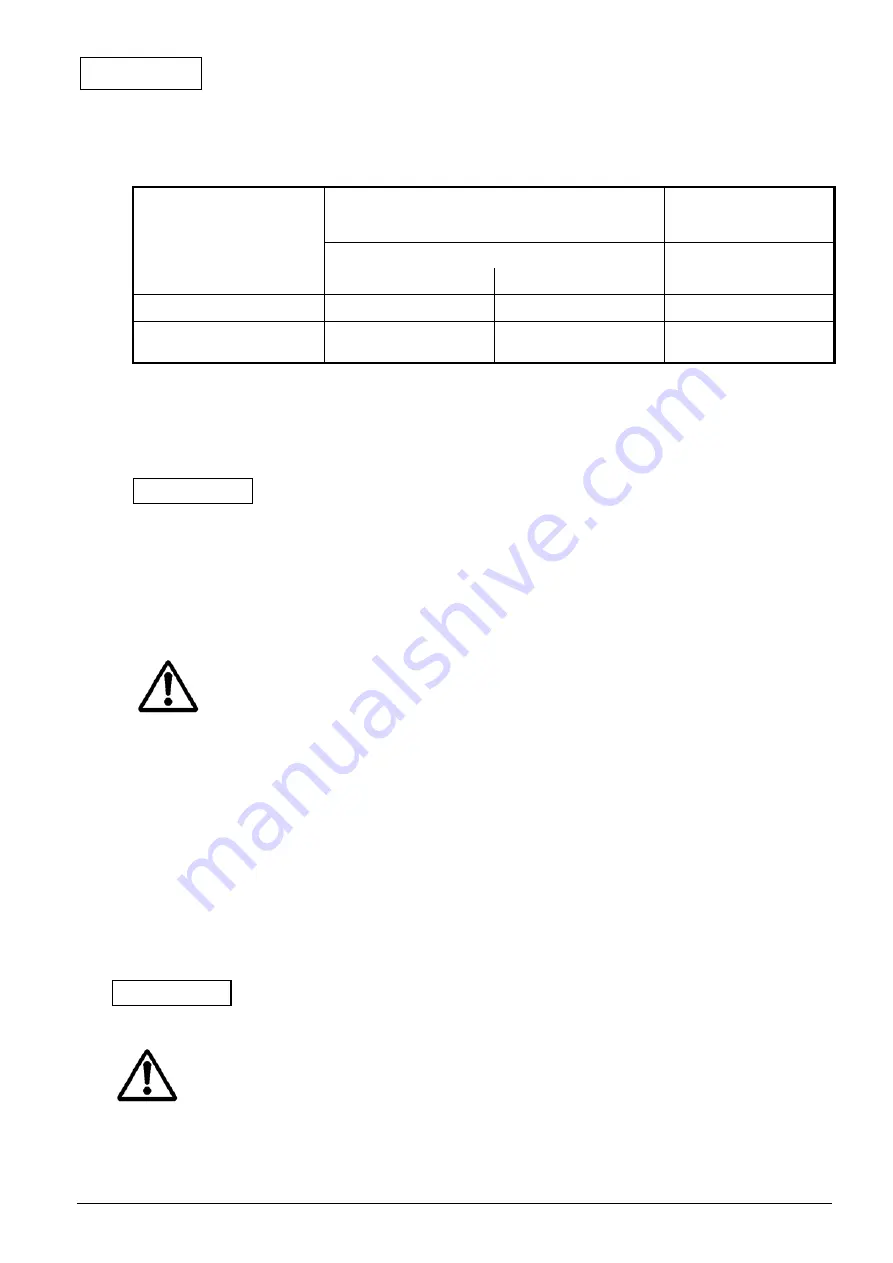
ENGLISH
-
Mains power supply to the terminal depends on rated motor power P2, the supply
voltage and the starting method. For the required terminal bridge connections refer to
table below and Fig.3.
Starting arrangement
Motor power rating
P2
d
3 kW
Motor power rating
P2
t
4 kW
Mains power
Mains power
3 ~ 230 V
3 ~ 400 V
3 ~ 400 V
DOL-Starting
'
-connections (3a) Y-connections (3b)
'
-connections (3a)
Y-
'
-Starting
Remove terminal
bridges (3c)
Not possible
Remove terminal
bridges (3c)
- Comply with respective installation and operating instructions when wiring to auto-
matic pump control gear.
6 Commissioning
-
Pump, suction and inlet piping must be filled and properly vented.
ATTENTION!
The pump must not run dry. Dry-running will damage the mechanical
seal!
- In order to avoid noise and damage due to cavitation a minimum inlet pressure must
be ensured at the pump suction port. This minimum inlet pressure depends on the
operating conditions and the duty point of the pump and must be accordingly calcu-
lated. Significant criteria for calculating the minimum required inlet pressure are the
NPSH-level of the pump at its operating point and the vapour pressure of the liquid.
- Vent pumps by unscrewing its air vent plugs (Fig. 4, 5, pos. 2.1).
Beware of sclading!
Depending on the fluid temperature and the system pressure, if the vent
screw is completely loosened hot liquid or gas can escape or even shoot out
at higth pressure.
- Check the direction of rotation by briefly switching on the pump and make sure that
rotation coresponds with the arrow on the motor (fan cover or flange). If necessary,
correct as follows:
- DOL-Starting: Change any 2 phase wires at the motor terminals (e.g. L1 and L2).
-
Y-
'
-Starting: At the motor terminals change winding start and end terminal connec-
tions respectively of 2 windings (e.g. V1 with V2 and W1 with W2).
-
Ensure a minimum flow of about or higher than 10 % of the maximum flow of the
pump.
- Check that the current input does not exceed the valve indicated on the motor data
plate.
ATTENTION!
The pump must not run for longer than 10 minutes with a flow rate of Q =
0 m³/h (closes discharge valve).
Rrisk of burning / frostbitten if the pump is touched!
Depending on the operating conditions of the pump or installation (fluid tem-
perature), the entire pump can become very hot or very cold.
Keep distance during pump operation!
18






























